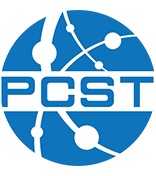“Photograph 51”: Science Communication in Contemporary Theater
Author: Constantinos Morfakis – National and Kapodistrian University of Athens, Department of History and Philosophy of Science, Greece
Co-authors:
- Yannis Hatzikiriakos – National and Kapodistrian University of Athens, Department of Communication and Mass Media, Greece
In our time, the interaction between science and performing arts updates famous C.P. Snow’s view of “two cultures” (1956) – which science and the arts/humanities are at “war” with each other – to a “third culture” that arts and science may actually build a harmonious relationship. According to Lustig and Shepherd-Barr (2002) “science is in vogue on stage as it has never been before. The best of these plays go far beyond using science as an ornament or a plot device”.
In this paper, we consider issues about the public image of a famous women scientist in the award-winning drama of Anna Ziegler, called Photograph 51 (2015). The “bioplay” is known for its revelation of the laboratory life of x-ray crystallographer Rosalind Franklin and her often-overlooked role in the discovery of the double helix structure of DNA whilst at King’s College London, where she shared a laboratory with the molecular biologist Maurice Wilkins.
Making use of actor-network theory (ANT), our given reading of Photograph 51 opens the “black box” of technoscience. In Latour’s terms (2005), this drama shapes a public image of technoscience as a network of heterogeneous elements which are taking place within a set of diverse practices. In STS’s terms, Photograph 51 depicts the laboratory life (Latour & Woolgar 1986) and science in action (Latour 1987) highlighting the Baconian character of modern science (Ihde 2004; Hacking, 1983). Alongside, drawn upon Gender Studies (Keller, 1987; Fliker 2003), we point how Photograph 51 shapes a feminist image of woman scientist in a male dominated scientific community. It invites us to look at the way women are treated in science today by looking at the subject through the prism of the past. In this context, Photograph 51 proves performing arts to be an advantageous medium that transforms the up-to-now way of science communication.
Presentation type: Insight talk
Theme: Time
